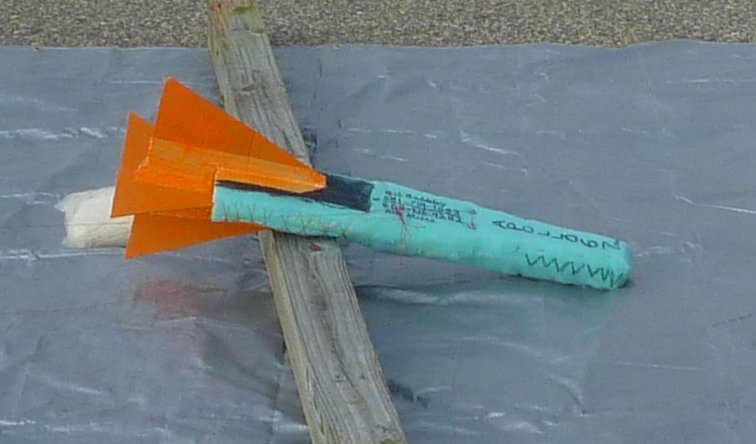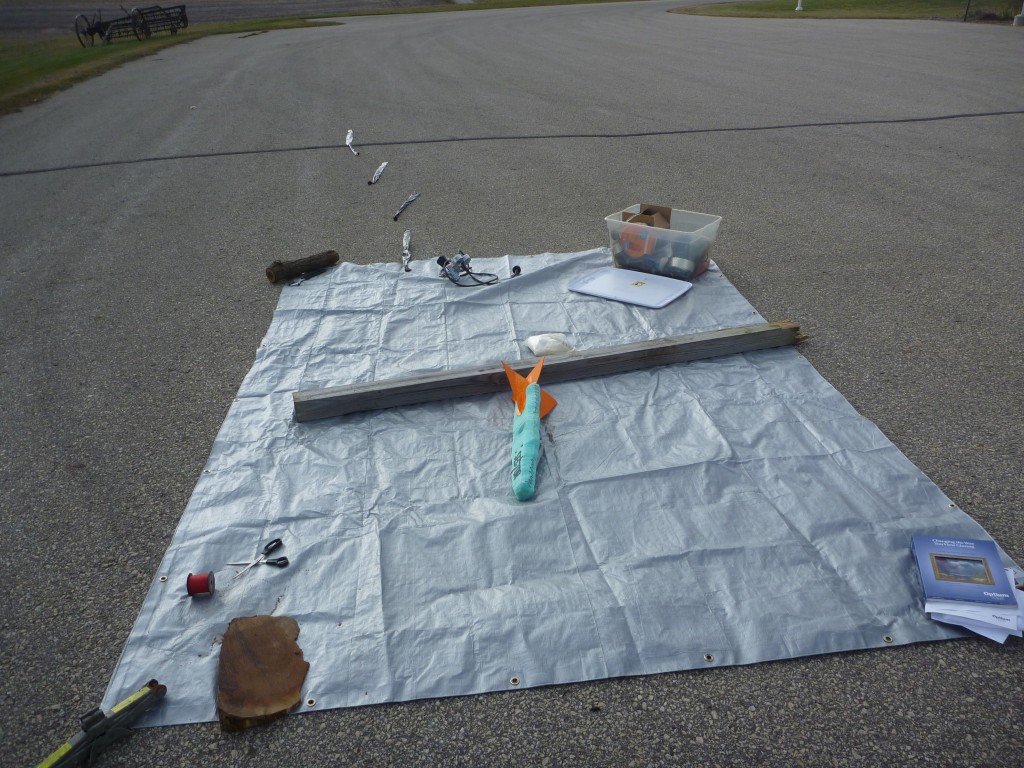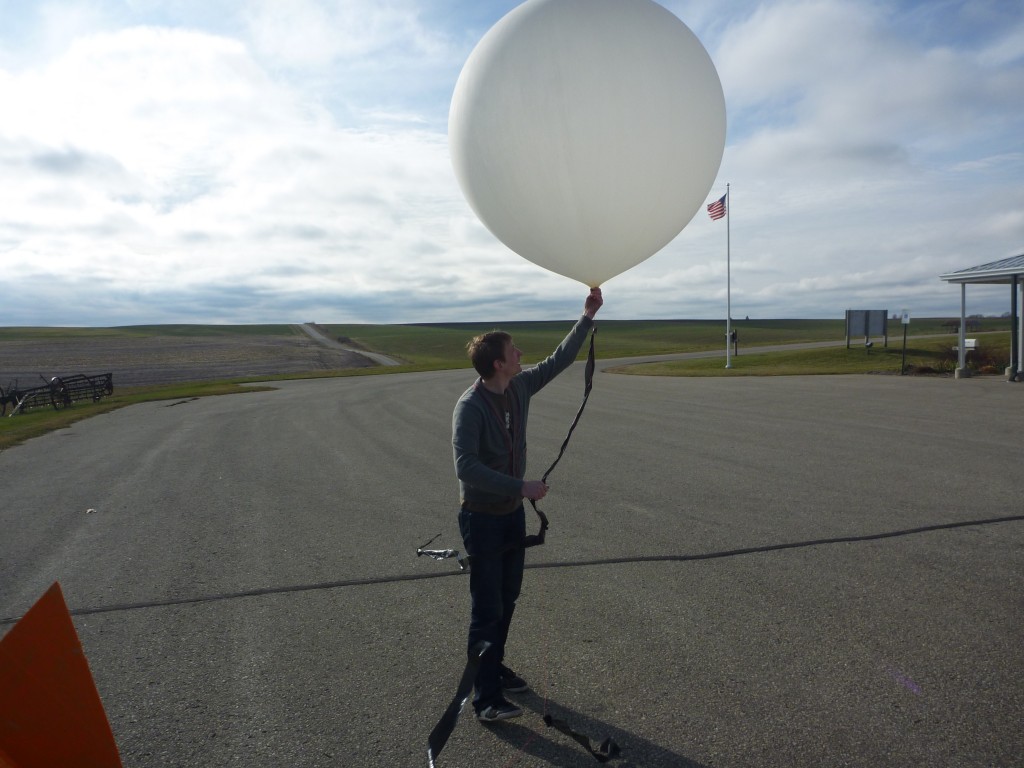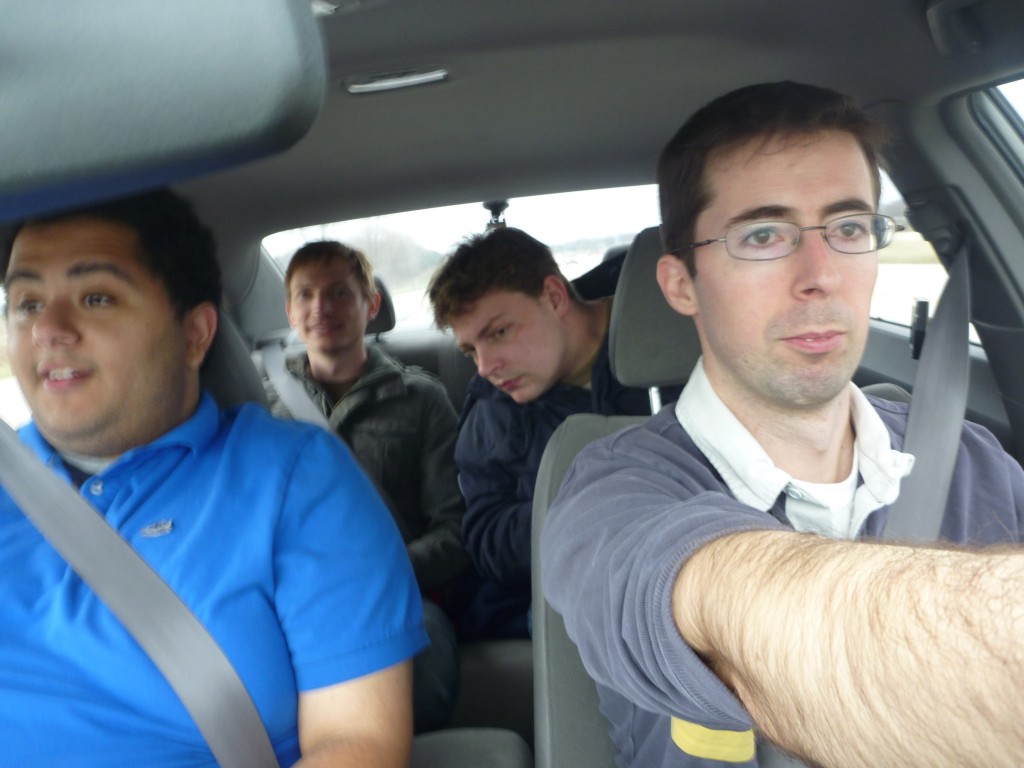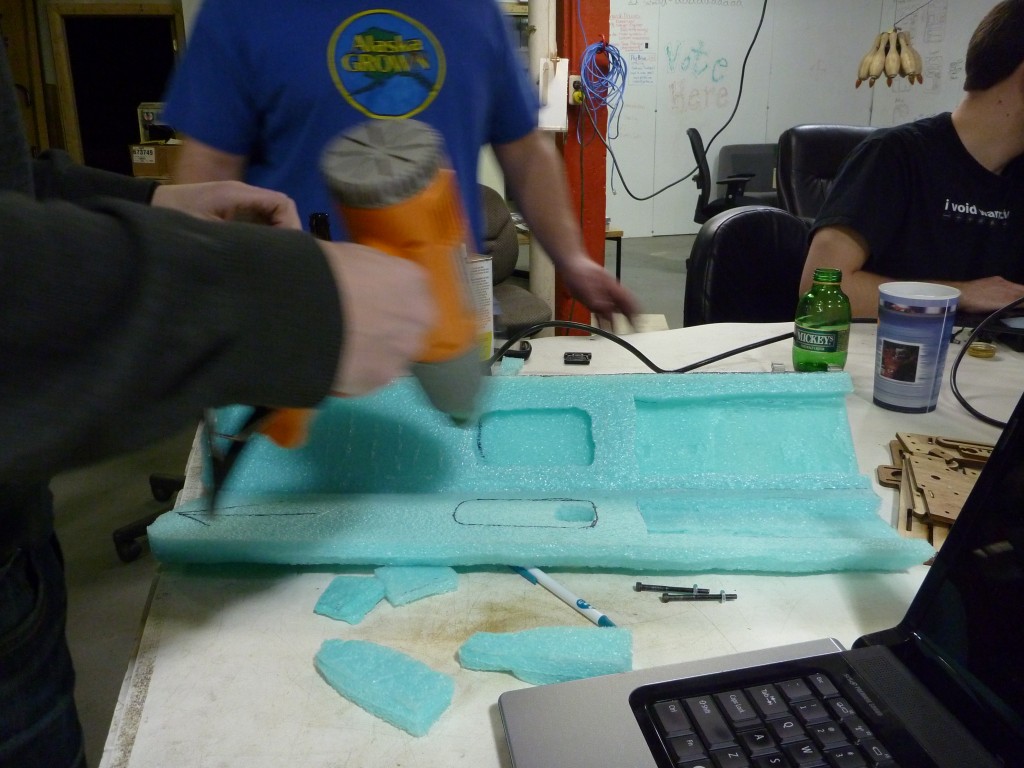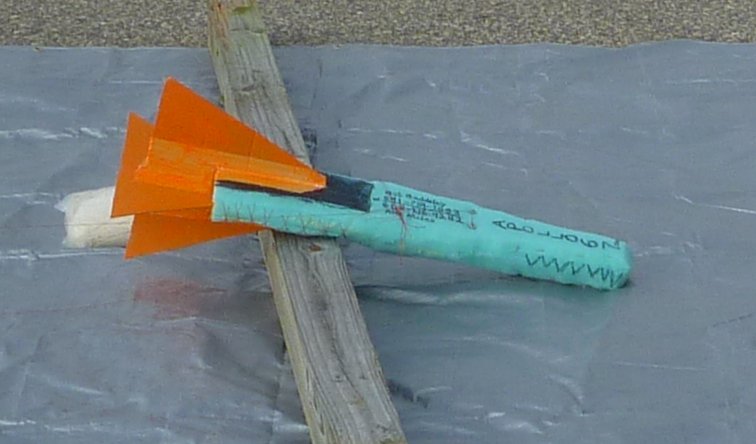Sunday Nov. 20, 2011, was launch day. We arrived at 7am to make preparations. We checked the weather conditions, re-ran the trajectory prediction calculator, and assembled materials, checking them off of the list as we put them in the car. The hydrogen tank fit snugly in the trunk of the car, and though we looked, we didn’t find regulations regarding the display of hazmat signs for transporting the tank.
A few more modifications to the envelope were made. Namely, addition of a pair of fins painted bright orange, and various signage, including names and phone numbers of responsible parties and this website.

Everything packed into the car. Hydrogen, tarp, and box of materials. The alligator rode in the back seat.
After packing everything into the car, three of us took a ride out to Ridgeway, which had been carefully researched as the best launch site because it was far enough West that the payload should drop before landing in Lake Michigan, but still far enough East that it was still within cell reception, and far from an airport and other tall structures.
We arrived at the site without incident, and it was better than we expected. It was unpopulated, but sported a nice parking lot, with only a single light pole acting as an obstruction, but it was upwind. Downwind was a small valley and fields. It was ideal, except for the wind and temperature. We hastily set out the tarp and materials, and borrowed wood logs to hold the tarp down. Then we assembled the tether and attached streamers to it to increase visibility and act as drag. We set up the regulator and hose, prepared the balloon, and inflated it.
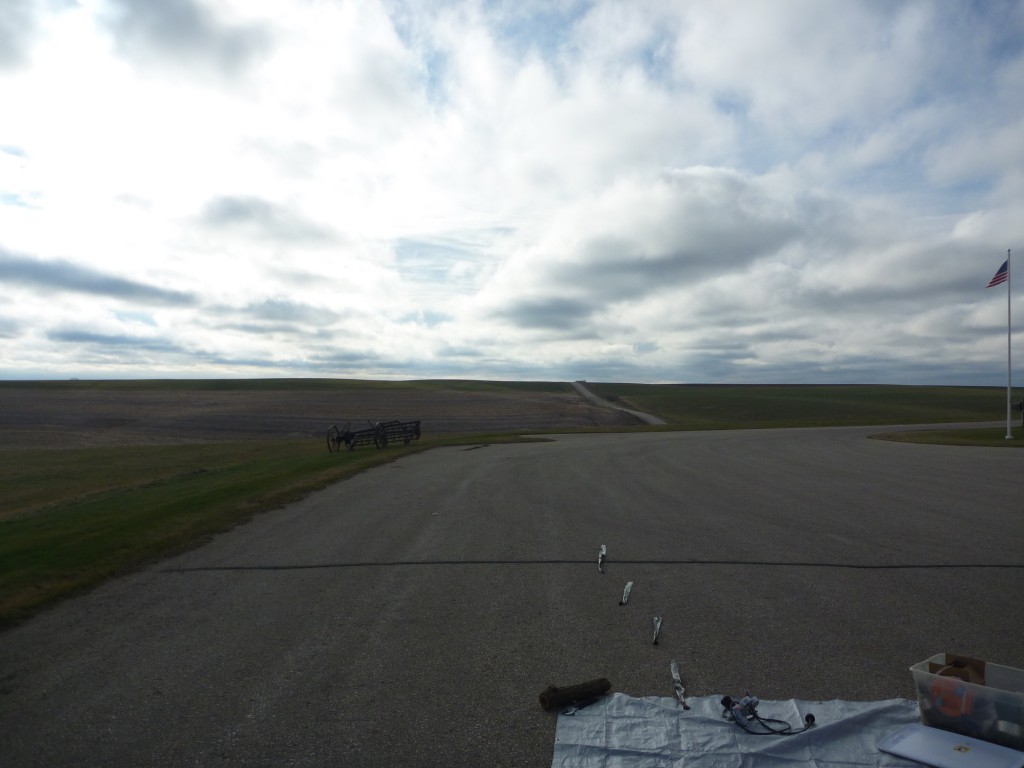
- Looking out over the launch site. Notice the wind blowing in that direction, where there are no vertical obstructions at all.
One person wearing latex gloves held the balloon steady as it inflated. The wind made this difficult, and the wind and cold made it painful. When it was ready, the phone was retrieved from the car, where it had been staying charged and warm, and inserted into the envelope and taped closed. Then a text message was sent to the phone, starting the timing, and once it had count down, we released the balloon, then immediately after the payload.
The balloon rose quickly and smoothly up. It wasn’t long before it was up into the clouds and gone. We hurriedly packed everything back in the car, warmed up, sent messages to the other team members, and then fired up our electronics for tracking.
Preparing for launch.
Immediately after we started tracking, we noticed that the app had successfully sent two messages about its whereabouts, so we were confident the app was running successfully. We sent a text message to start instamapper and headed back East. We had originally intended to skip Madison and head directly to the projected landing site, but the realization that we had a tank of hydrogen still in the trunk motivated us to stop back at Sector67.
The only data we captured from the phone:
Another car had gone East as soon as we launched so that they could be closer when the balloon landed. After dropping the tank off, changing cars, and taking on a fourth member in ours, we headed East as well.
At the point where we should have heard from the phone excitement turned to nervousness. No news on any of the three tracking methods. The time came and went, and we continued to perform calculations and come up with reasons for why we hadn’t heard from the phone and the ramifications of not having heard from it yet. Eventually we tried calling it to see if the phone was even in cell range, but it went straight to voice mail. We stopped just outside Milwaukee to eat lunch and continue to wait.
During lunch the other car met up with the first car and we discussed possibilities and next steps. Then we went back to Sector67 and got rest after our long night of work.


